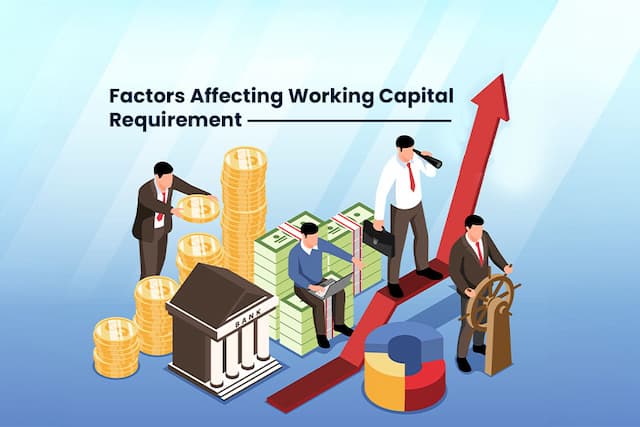For Indian exporters, claiming a GST refund is not merely a matter of compliance; it is a key aspect of effective working capital management. Delayed filings restrict access to working capital, limit cash available to grow the business, and require more expensive forms of external financing or factored accounts receivable. This guide provides a complete view of how exporters can avoid delays in receiving GST refunds, curb working capital deficits with delays in refunds, and adopt industry best practices.
The Export GST Refund Application Process
The GST refund process for exporters is a document-intensive procedure and requires meticulous record-keeping. Here are the steps for the refund application process:
- GST Return Filing: Export information is reported in the GSTR-1. Overall transactions are reported in GSTR-3B.
- Documentation Uploading: Export invoices, shipping bills, e-way bills, and evidence of repatriation of exports (e.g., Services – FIRC).
- Applying Through the GST Portal: Use Form RFD-01 and select the refund category (IGST paid OR accumulated ITC). All the documents required for your application must be submitted using the new invoice-wise system.
- Verification Process: If claiming IGST, Customs (ICEGATE) will verify that the data matches and will issue a refund. If claiming ITC, jurisdictional GST officers will review all documents.
- Refund Payment: Based on the verification process, the approved amount will be credited to your registered bank account.
Why Do GST Refunds Get Delayed?
Even with automation, many exporters are experiencing GST refund problems. Here are the most common root causes:
Documentation Mismatches and Errors
- Data Errors: A mismatch between export invoices, shipping documents, and GST returns (GSTR-1, GSTR-3B) is the key reason claims are rejected or delayed.
- Attachment Failures: If you do not upload the required documents, it will automatically generate deficiency memos, and extra time will be added when processing.
- Invoice-Based Filing Failures: If a refund application uses an invoice for another refund application (i.e., did or attempted), it will create a delay in the GST refund.
Return Filing Lapses and Non-Compliance
- Non-Filing or Late Filing: Refund requests will not be permitted unless all pending GST returns (whether monthly or quarterly) are duly filed. The updated refund system strictly follows this guidance.
- Incorrect Reporting: Any discrepancies found in reported quantities, values, or tax paid will cause unnecessary delay in the GST refund.
Officer Review and Deficiency Memos
- Deficiency Memos (RFD-03): GST officers may issue these if an application is incomplete or incorrect. Exporters must rectify and resubmit, causing delays of several weeks.
- High-value or Flagged Transactions: Claims over ₹ 2 lakh, or claims flagged for compliance verification, typically require some additional verification, and this will delay payment.
Operational Gaps and System Limitations
- Volume and Seasonality: Peak periods (especially around financial year-ends) can overload system and manual resources beyond normal capacity, resulting in extended processing intervals.
- Changes in Regulation: Not keeping up with rule changes can result in non-compliant applications and further refund problems for exporters.
Actionable Tips to Reduce GST Refund Delays
Exporters require a strong combination of process discipline, digital tools, and active communication to have an efficient refund cycle. Here are some working capital tips for export businesses to reduce the delay process:
Create a Document-Readiness Checklist
Always prepare each claim with a standardized checklist: correct sequential invoice numbers, shipping bill details, e-way bills (if applicable), evidence of export realization, and copies of LUT/bond. This way, you will not miss anything while filing for a GST refund.
File Returns and Refund Applications Early
Don’t file at the last minute, as system and officer loads are highest around due dates. Early filing gives some buffer for resolving potential problems, providing assurance to track progression, and understanding how to get a GST refund faster.
Ensure Up-to-Date Bank Details on the Portal
Verify in every refund cycle that your bank account is active, verified, and correctly linked to your GSTIN. Ensure all updates related to account details, mergers, or branch changes are consistently maintained.
Be Aware of Regulatory Changes
Sign up for GSTN and CBIC circulars; many delays are due to failing to account for new requirements like invoice-based claim filing or operational modifications due to rule amendments that affect the export GST refund process.
Maintain Communication with Authorities
For claims with high value or delays, reach out directly to GST officers or click to select online grievances if the refund is delayed beyond the statutory timeframe. This is a crucial step in getting a GST refund faster.
Exploring Credlix: A Smart Solution for Working Capital Gaps
In a market where GST refund could take weeks or even months, export-focused fintech solutions such as Credlix act as a working capital support partner. Credlix helps exporters to:
- Get Access to Immediate Working Capital: Uncover up to 90% of invoice value in 24–48 hours, filling the liquidity gap while waiting for a GST refund.
- Simplify Documentation: Documenting via digital platforms integrates GST data, customs data, and invoice documentation – all of which minimize compliance errors and fast-track access to funding from both bank and non-bank lenders.
- Simplify Finance: Dashboards for all export invoices, finance needs, and refund status put exporters in control of their capital cycles and help with GST refund status check.
Conclusion: Winning Against GST Refund Delays
Even in a more automated environment, GST refunds may still take longer to be paid. Fortunately, there are ways that exporters can limit the amount of time to get their GST refund. They can do so by implementing compliance procedures, reconciling in real time, timely lodging of returns, and tracking cash flow. For exporters, there are now next-generation financial facilitators like Credlix that can offer you certainty and predictability, allowing you to pursue growth and purchase whatever capital needs, no matter where you are in the GST refund application process.
Frequently Asked Questions
Q1: What is the maximum time to submit the GST refunds for export?
Exporters must submit GST refund within two years from the relevant date of export. For goods, the export date is the shipment date; for services, it’s the foreign remittance receipt date.
Q2: What are the documents required for a GST refund application?
Documents required by the applicant are shipping bills, GST invoices, bank realization certificate (for services), and GST returns, e.g., GSTR-1, GSTR-3B, etc., collected.
Q3: How do I expedite my process with GST refunds?
Ensure that you are uploading the required complete and accurate documentation, respond to queries quickly, and file your returns correctly and on time. Also, check to corroborate that your bank details and portal details are accurate.





